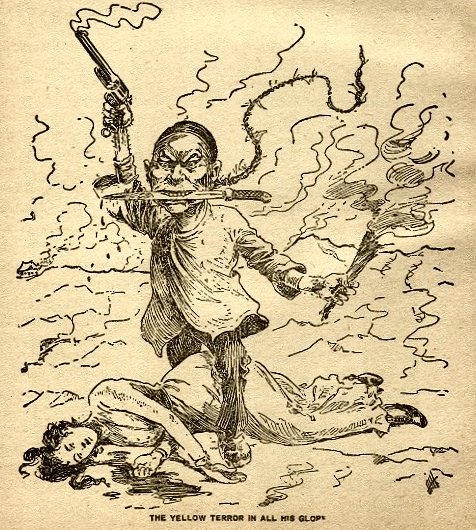It is winter 2015. Venice Beach, California. A group of street performers, an elderly Chinese man, and a crowd of eager onlookers. What could go wrong?
I am relishing the sight of black and brown and yellow faces surrounding me, the comfort I feel at simply being one of many faces in a crowd rather than one of the few colored faces in a sea of white.

But then the unmistakable “Kung Fu Fighting” starts blasting from the speakers. And then the performers, a group of black and Latino men, chant, “We want the Asian guy!” as they pull the elderly Chinese man from the crowd. They put him on display for the audience, mocking his accent and making fun of his Chinese name.
The real show begins as they instruct the Asian man to pose in a variety of stereotypical martial arts stances, and he engages in a mock battle with one of the performers. Meanwhile, another performer sneaks up behind him and begins to slap his bald head, shouting.
“Stay still! Discipline! Discipline! Discipline!”
The man’s smile has dropped from his face, but he continues playing along, his kicks becoming more vigorous with each taunt.
“Guess what, guys? This dude is really really Asian!” The performers dismiss him from the circle and the spectators applaud as if to congratulate him for fulfilling the Asian stereotypes of foreign and passive.
I’ve returned to my former home of Los Angeles with a breath of relief, eager to escape the predominantly white Southern college that I call home. But the reality is that racial prejudice exists even among the multicultural masses of California, both government-sanctioned through racial and economic residential segregation, and through the legacies of violence between Korean and black populations in the nineties that live on in social memories today.
The black street dancer makes a spectacle out of the Chinese man. And my Korean aunt scoffs at the tents that black homeless folks have set up under an overpass. The myth of the model minority, a narrative driven by white supremacy, deepens divides by pitting minority against minority. What they’ve both forgotten—or never knew to begin with—is that people of color have a shared history and a shared fight.
In Margins and Mainstreams, Gary Okihiro discusses the roots of the term “yellow peril,” which historically means “an irrational fear of Oriental conquest, with its racist and sex-fantasy overtones.” He traces its origins to the European imagination of Asians, when Persians were depicted as “locusts” and Mongols soldiers dehumanized both as vicious and immoral “superhumans” or as animalistic brutes.
But such racist tropes are certainly not unique to Asians, and in fact come from a larger Eurocentric viewpoint that others non-whiteness, the same otherness that painted Africa as the Dark Continent and criminalized blackness.
We cannot allow ourselves to be duped by histories glossed over by white supremacy. Asian Americans’ and African Americans’ respective histories of European colonization and American oppression overlap in many ways, and we must not allow our memories to be “massaged by white hands,” as Okihiro puts it. So let’s reclaim our histories. Let’s unlearn the myths and lies we have internalized for so long. Let’s reclaim the language used to degrade us. Let Yellow Peril stand in solidarity with Black Power.



